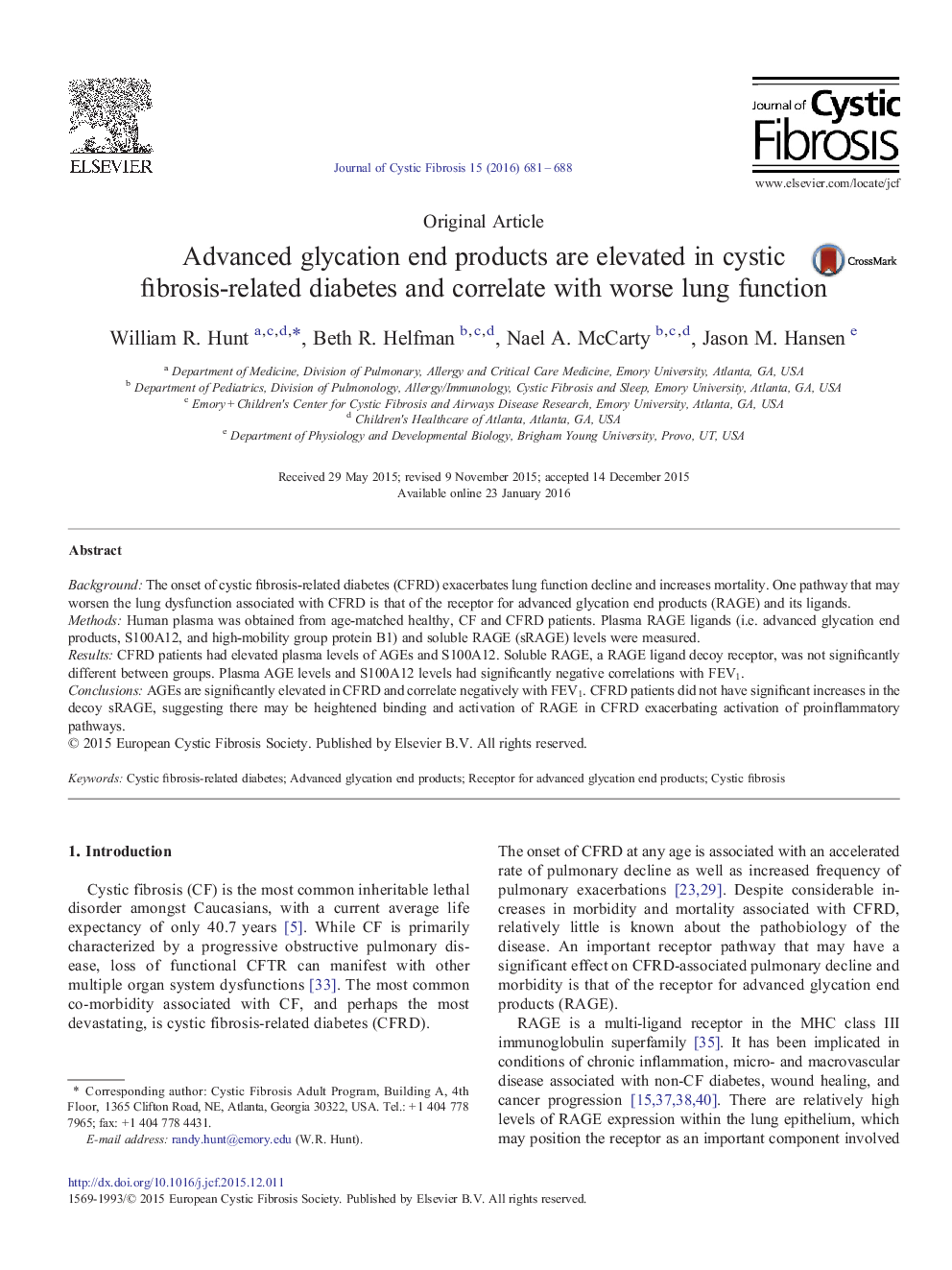| Article ID | Journal | Published Year | Pages | File Type |
|---|---|---|---|---|
| 5724776 | Journal of Cystic Fibrosis | 2016 | 8 Pages |
BackgroundThe onset of cystic fibrosis-related diabetes (CFRD) exacerbates lung function decline and increases mortality. One pathway that may worsen the lung dysfunction associated with CFRD is that of the receptor for advanced glycation end products (RAGE) and its ligands.MethodsHuman plasma was obtained from age-matched healthy, CF and CFRD patients. Plasma RAGE ligands (i.e. advanced glycation end products, S100A12, and high-mobility group protein B1) and soluble RAGE (sRAGE) levels were measured.ResultsCFRD patients had elevated plasma levels of AGEs and S100A12. Soluble RAGE, a RAGE ligand decoy receptor, was not significantly different between groups. Plasma AGE levels and S100A12 levels had significantly negative correlations with FEV1.ConclusionsAGEs are significantly elevated in CFRD and correlate negatively with FEV1. CFRD patients did not have significant increases in the decoy sRAGE, suggesting there may be heightened binding and activation of RAGE in CFRD exacerbating activation of proinflammatory pathways.
